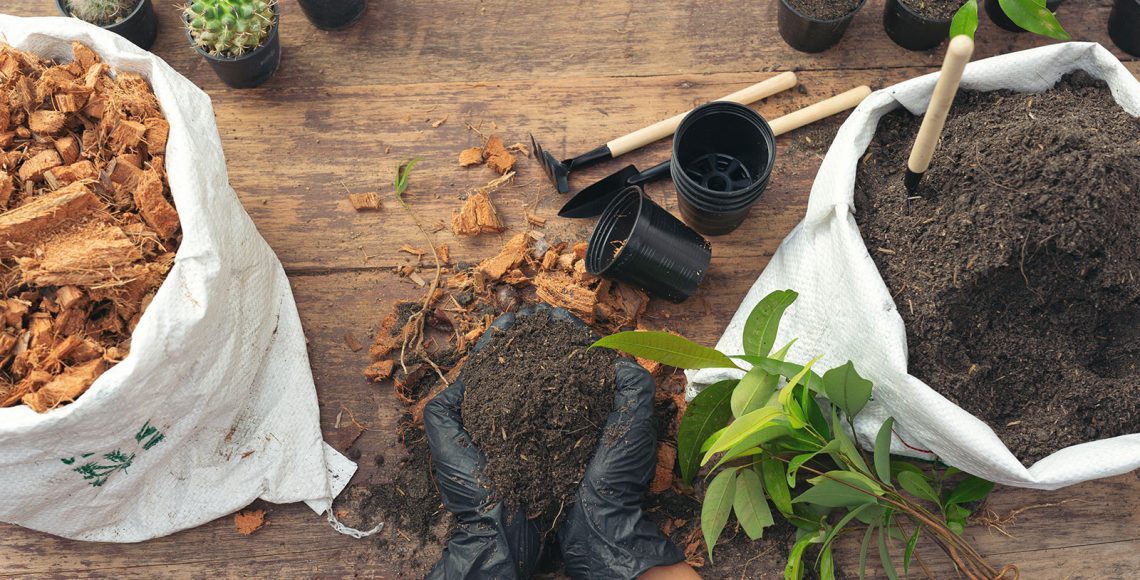5 Creative Ways to Grow Vegetables and Herbs in a Small Space
By 2050, it is estimated that the world’s population will increase by more than 35 percent. To realistically feed everyone, the world’s crop production would need to double. But placing that burden entirely on farmers when more than 55% of people now live in urbanized areas isn’t practical – nor is it necessary! Step out onto your balcony or patio, and you’ve found a perfect setting to grow food.
As gardeners, we’re all dreamers, right? We take a miniscule seed from a colorful packet and gently place it in the soil. And in that seed is the dream of what’s to come— lively green stalks of rosemary or a lush bunch of basil. Growing herbs is a great way to add beauty to a balcony as well as incorporate new spices and flavors into cooking. Herbs are one of the most popular edible plants for gardeners to grow. Even if you haven’t always had a super green thumb, these smaller scale and absolutely adorable balcony herb gardens are completely manageable as long as you give your plants a little TLC.
There’s no such thing as a maintenance-free garden. Growing food is enriching, but it’s understandable if you don’t want to spend a lot of time with your garden after long days at work.
Take into account all of the conditions of both your growing area and your lifestyle. Doing so will allow you access to healthy, productive plants and give you the highest enjoyment out of the gardening process.
Know the Sunlight
A large part of growing herbs in a small space is knowing what kind of sunlight your space receives each day. Most herbs need 4-6 hours of direct sunlight in order to grow well. Before you purchase anything, take a peek at your space at different times of the day and consider marking where the sunlight hits your space. Nearby houses, buildings or trees may shade your space so make sure that you know what sunlight your space receives in order to successfully grow herbs.
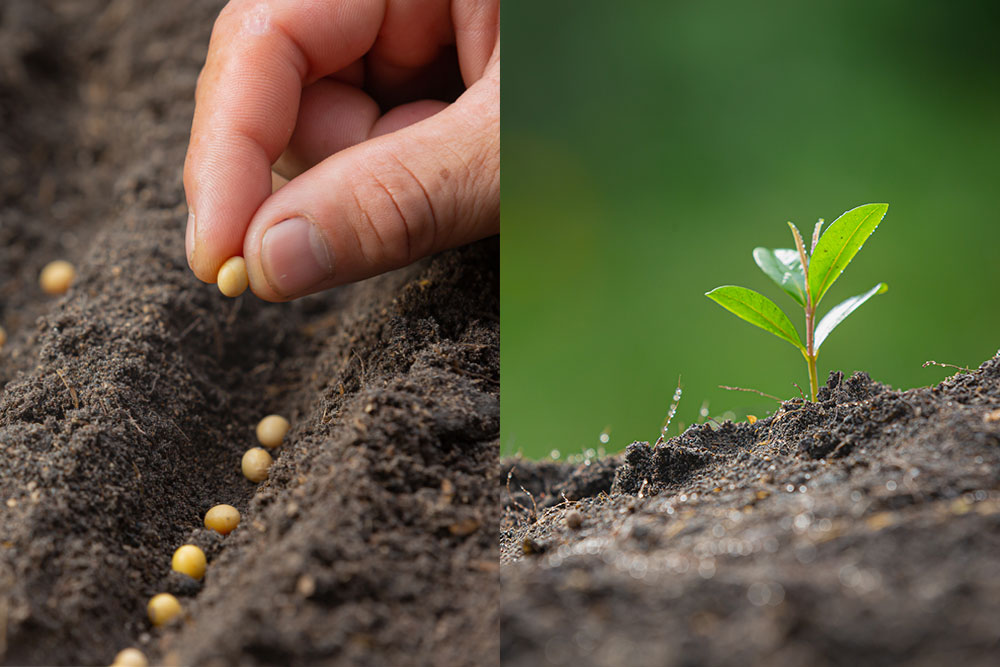
Decide On Seed or Starters
Herbs can be grown from seed which means that you would purchase seed packets at the store. Growing from seed can be a fun thing to do, you’ll want to purchase a seed starter pack to hold enough moisture to start propagation. However, the easiest way to grow herbs is to purchase starter plants that have already sprouted. Doing so will give you a good idea of which herb is which plant as well as more time to harvest the herbs as the season progresses.
Grab the Gear
You only need a few things to plant herbs successfully in a small space. Just a few pots, potting soil, and herb plants are all you really need in order to get started. When choosing pots, it’s a great idea to keep in mind the potential of bringing your plants indoors once cold weather comes back to extend the season of fresh herbs. So you’ll likely want to choose ones that are easy to manage and won’t leave a mess. Choose herbs that you already use in your cooking as well as a few new varieties that look interesting while at the garden center. Read the tags of each plant to make sure that they will match the available sunlight on your balcony. Don’t overcrowd young seedlings but consider their tag to see how much room they will need once fully matured.
Stay Water Conscious
When you first plant a seedling it is a good idea to water the soil to make sure that it doesn’t go into shock. Consider the plant itself and what kind of soil it likes: moist or dry. Check soil on a regular basis to make sure that herbs don’t dry out and consider the weather to see if they got their daily dose of water from a passing storm. If the edges of the plant begin to brown or wilt, then you will know that you need to water more.
Understand Harvesting
One of the toughest parts of maintaining an herb garden is knowing how and when to harvest the herb. Not all herbs are the same when it comes to harvesting. If you are growing basil, be sure to snip leaves from the top of the plant instead of the bottom. Herbs like oregano and mint can be harvested by simply snipping off the leaves anywhere on the plant. Chives can be directly cut down to the soil if desired as well. Do your research and know how to correctly harvest your herbs in order to get the most out of each plant.
Why Herbs?
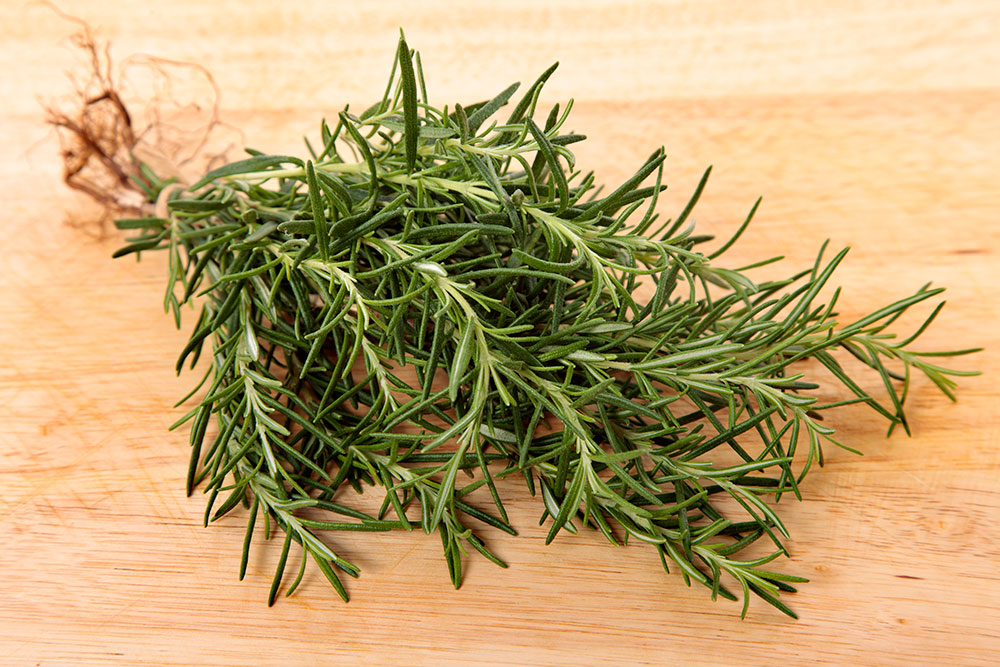
Redefine Fresh
What’s on the shelves will never match what you grow yourself. Here are a few ways in which fresh herbs can benefit your health:
Rosemary: Rosemary is a rich source of antioxidants and anti-inflammatory compounds which help boost the immune system and improve blood circulation. It has also been used medicinally for its antibacterial, antidiabetic, anti-inflammatory, and antimicrobial properties. In fact, rosemary is even used as a food preservation antioxidant in Europe. When inhaled, rosemary has also been shown to enhance memory
However, rosemary is most praised for its positive impact on the brain. It has been shown to improve memory, reduce anxiety, and improve sleep when taken orally.
Mint: Mint helps soothe nausea and calm digestive issues. It is also high in antioxidants.
Oregano: Oregano is rich in antioxidants and has antibacterial and antiviral properties.
Thyme: Thyme is a natural diuretic and helps with respiratory issues. It is also high in antioxidants and has antibacterial and anti-fungal properties.
Lavender: Lavender is an herb that can be used for many things but mostly for anxiety and stress. Not only does it have mood-boosting benefits, but it also has a heart-warming aroma and a beautiful display of deep-purple color. Traditionally, lavender has been used for relaxation and treating infections, burns, and bites. However, current evidence has shown that lavender oil has mood-stabilizing, sedative, and neuroprotective properties.
Parsley: Parsley is rich in vitamins A, C and K, improves digestion and is a natural diuretic. It is also high in antioxidants and has antibacterial properties.
Sage: Sage helps balance cholesterol and is rich in antioxidants.
Chives: Chives improve digestion and are high in antioxidants. They also have excellent antibacterial, antiviral, anti-fungal and antibiotic properties.
Cilantro: Few think of this plant as a medicinal herb, but research shows it’s a powerful digestive aid and may be capable of removing heavy metals and other toxic agents from the body.
Basil: Basil is rich in antioxidants and has anti-inflammatory, antibacterial and antiviral properties.
Dill: Dill boosts digestion and is high in antioxidants. It also has antibacterial, anti-inflammatory and antimicrobial properties.
Chamomile: Chamomile has been used for hay fever, inflammation, muscle spasms, menstrual complications, insomnia, wounds, digestive issues, and pain for many years.
There is an endless plethora of options about what to grow and how to grow your garden. Be creative with the small space you have by using the wealth of container options different suppliers will have to offer, or by testing the boundaries with your own creative ideas.
Consider Your Containers
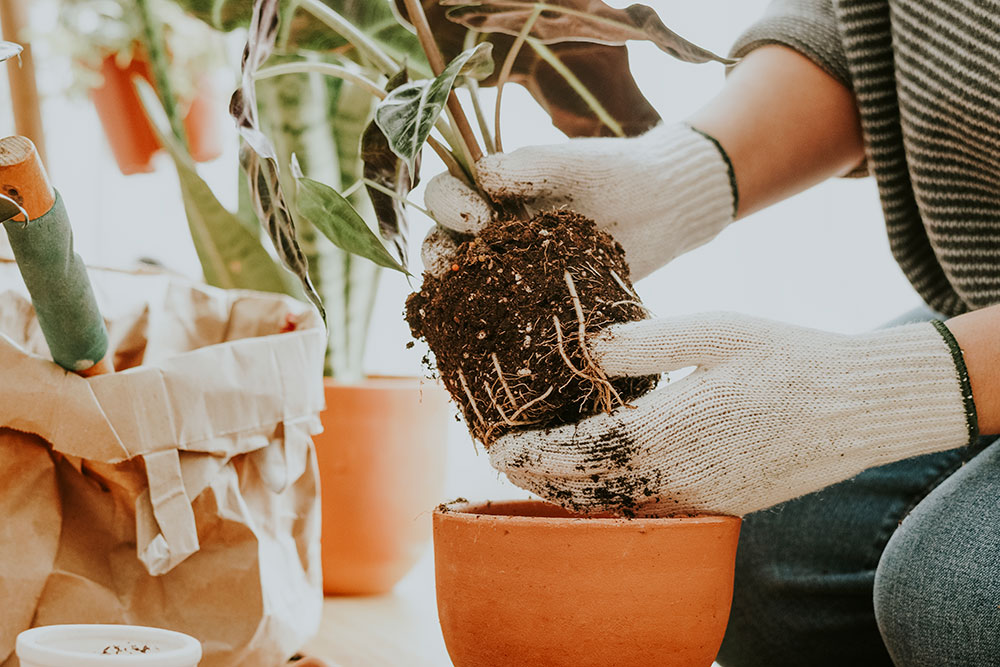
1. Planters And Pots
If weight is not an issue, large planters and pots made of wood or terra cotta are very attractive and offer ample space for all types of growing. Keep in mind that terra cotta usually dries out quickly, however. Resin and plastic pots offer a lightweight alternative in the greatest number of sizes, shapes, and self-watering options.
With large pots and planters, the gardener has the opportunity to grow individual small shrubs, perennials, or a wide variety of traditional garden vegetables. Smaller pots and planters are great for planting kitchen herbs, perennials, and annuals. They can be used in combination with vertical gardening.
2. Going Vertical
Vertical gardens are a space saving concept to the home gardener because they employ the vertical walls of your balcony. There are many creative ways to use this method: using pallets filled with soil and affixed to the wall, attaching pots to a trellis, hanging gutters from a chain, or terracing on planter stairs. On the downside, the vertical garden can have a splash factor that can dirty the walls from overhead watering and dripping from a height. Drip irrigation works well to avoid this problem combined with a catchment system at the bottom.
3. Railing Or Hanging Baskets
Railing baskets, window boxes, or hanging baskets are the easiest choices for the tiny balcony. Made of wood, steel, or plastic, these containers are built to hang off the balcony railing or from the eaves. Usually shallow in nature and more prone to dry out, these types of baskets are suitable for drought-resistant plants or those smaller in size. Succulents, annuals, strawberries, herbs, and lettuce can be successfully grown in a railing or hanging basket. Both of these container options should be secured using zap straps, screws, or brackets to prevent the container from being knocked off by wind or an accidental bump.
4. Up-Cycled Containers
As a gardener, you are the artist and have the creative licence to explore a variety of containers. To add your own personal flair to the balcony landscape, transform household items into a plant container by adding sufficient holes for water drainage. Up-cycling colourful rubber boots, old yogurt containers, mugs, jugs, baskets or any other vessel is one way to reduce your garbage and also save you money.
Challenges
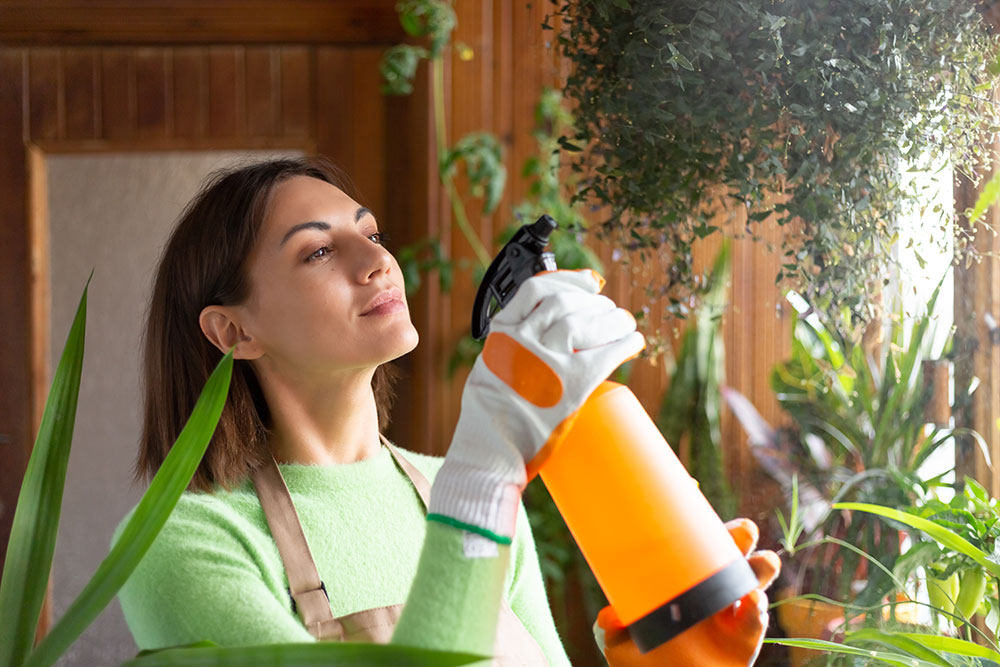
The pitfalls you might encounter on a balcony are different than the traditional garden landscape. Prevent these challenges before you start by reducing the risk of hazards.
Windy locations – High winds that occur on tall buildings will knock small pots over or railing pots off and will also increase dehydration. Secure all vessels by fastening to a stable structure and use a thick mulch to reduce the evaporation of water.
Watering overflow – Excess water from overflow when watering your plants can cause rot on wood balconies or flow down to the neighbour’s deck or onto unsuspecting people on the sidewalk. Include large trays for all pots or catchment systems for planters. Be mindful of what’s below when watering pots.
Birds and wildlife – Pigeons and other wildlife can be as attracted to your plants as you are. They feed on developing fruit, use structures or railings as roosts, or in the case of rodents, burrow into the soil. Deter these creatures by limiting the room they can roost upon or by covering exposed soil with fine chicken wire.
Cold weather – Winter preparation is necessary for those gardeners located in sub-zero locales. Ceramic pots should have soil removed to prevent freezing and cracking of the pot. Plants intended for year-round display should be placed closer together and pots wrapped with burlap to assist with insulating the roots.
Final Thoughts
Starting a balcony or rooftop food or herb garden is a win for you, the planet, and humankind. Even if you live in the middle of a city, you can step onto your balcony and pluck off some produce, saving a trip to the store. Not only is gardening an enjoyable and therapeutic activity, but it can help you reduce 8% of your carbon footprint that comes from food consumption.
Since you probably won’t raise any cattle on your balcony, having a garden might also encourage you to eat more vegetarian meals. Eating even one vegetarian meal a week can save the greenhouse gas equivalent of 1,160 miles of driving per year.
You have the opportunity to reduce your greenhouse gas emissions, improve your health, reduce waste, and save water, even if you live in a city. If you’ve got a balcony, a little rooftop spot, or some outside space, cultivating your own balcony herb garden is a wonderfully fulfilling and mood-boosting trend you could end up keeping for years to come.
To learn more creative ways to grow herbs in a small space

